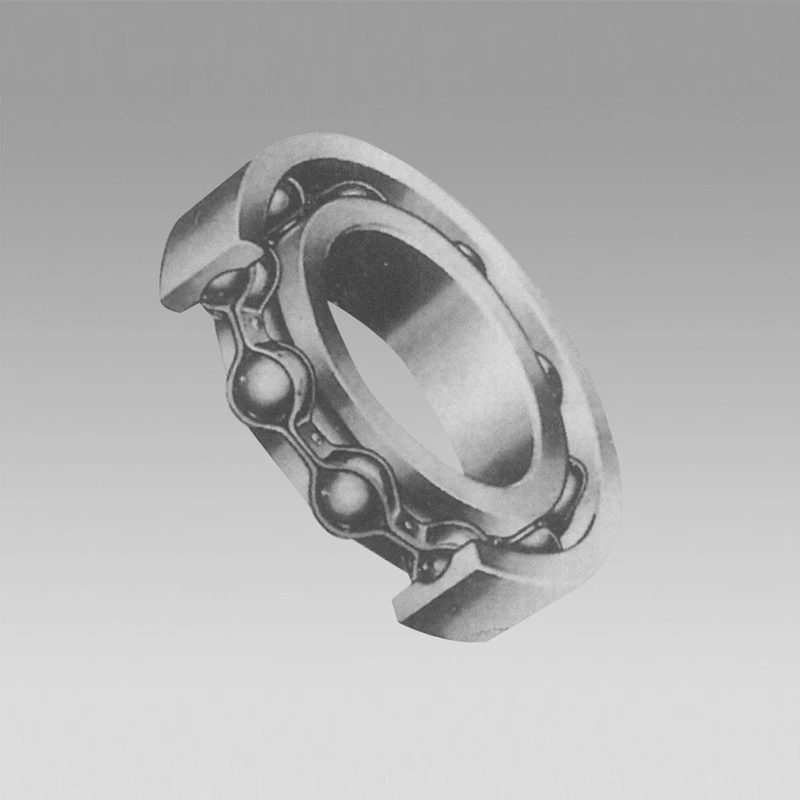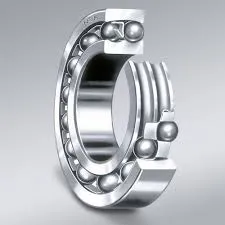
Jul . 06, 2025 08:33 Back to list
Spherical Roller Bearing vs Ball Bearing Key Differences, Advantages & Applications
- Comprehensive introduction to spherical roller bearing vs ball bearing
and their relevance in modern industries - Technical structure and performance analysis for both types
- Comparative overview of other key bearings: tapered roller bearing vs spherical roller bearing, and spherical roller bearing vs cylindrical roller bearing
- Manufacturer comparisons focusing on global quality benchmarks
- Customization solutions for challenging industrial requirements
- Real-world application cases highlighting tangible benefits
- Concluding evaluation on spherical roller bearing vs ball bearing for optimal selection

(spherical roller bearing vs ball bearing)
A Complete Introduction: Spherical Roller Bearing vs Ball Bearing Applications
Bearings are an essential cornerstone of mechanical engineering—they facilitate rotational or linear movement, reduce friction, and support loads. Among the most prevalent bearing types are spherical roller bearings and ball bearings, each designed with unique construction, capabilities, and applications. The choice between spherical roller bearing vs ball bearing extends beyond simple functionality, impacting factors like maintenance, load capacity, and operational efficiency. This article explains how these components differ and where each excels in technical, commercial, and industrial contexts.
Engineers and procurement professionals frequently compare these bearings not only with each other but also with other industry standards such as tapered roller bearings and cylindrical roller bearings. In modern machinery, the correct bearing selection can affect operational lifetime, production downtime, and overall costs—making this subject crucial for decision-makers.
Technical Structure and Performance Breakdown
Spherical roller bearings are characterized by two rows of barrel-shaped rollers, housed within an outer raceway that is spherical in shape, enabling them to accommodate substantial misalignment and heavy radial as well as axial loads. In contrast, ball bearings use balls as rolling elements and are more suited for lighter radial and thrust loads with high-speed requirements.
The table below highlights the key performance and structural data for each bearing type, using standard industrial metrics:
| Feature | Spherical Roller Bearing | Ball Bearing |
|---|---|---|
| Typical Load Capacity (kN) | 500 – 6,000 | 1 – 800 |
| Allowable Misalignment | 2° – 3° | 0.07° – 0.13° |
| Maximum Operating Speed (rpm) | 1,000 – 3,600 | 12,000 – 100,000 |
| Main Application | Heavy machinery, mining, conveyors | Electric motors, tools, pumps |
| Shock Resistance | Very high | Moderate |
| Lifespan under Heavy Load (hours) | 10,000 – 80,000 | 2,000 – 10,000 |
The superior load-carrying capacity and misalignment tolerance of spherical roller bearings make them indispensable for heavy-duty and challenging environments. Ball bearings, while excelling in high-speed settings, have more limitations regarding shock absorption and misalignment capability.
Tapered Roller Bearing vs Spherical Roller Bearing and Cylindrical Variants
The industry often considers the distinction among tapered roller bearing vs spherical roller bearing and spherical roller bearing vs cylindrical roller bearing for specialized requirements. Tapered roller bearings excel in applications with combined radial and axial loads, particularly where thrust loads are dominant. In contrast, cylindrical roller bearings are ideally suited for applications requiring high radial load capacity, but offer minimal axial load support.
Comparative technical specifications:
| Type | Radial Load Capacity | Axial Load Capacity | Misalignment Handling | Common Use Cases |
|---|---|---|---|---|
| Spherical Roller Bearing | Very High | Moderate to High | Excellent | Mining, Cement, Steel Mills |
| Tapered Roller Bearing | High | Very High | Poor | Automotive, Gearboxes |
| Cylindrical Roller Bearing | Very High | Low | Poor | Electric Motors, Compressors |
As the table illustrates, the choice of bearing pivots on the relative importance of radial load, axial load, and misalignment in the application. Spherical roller bearings offer the most versatile solution for misaligned or heavily loaded shafts.
Global Manufacturer Comparison for Quality and Innovation
Several prominent manufacturers lead the global market in spherical roller bearing and ball bearing technology. Quality is assessed by strict benchmarks such as ISO/TS 16949 for automotive bearings, dynamic and static load ratings, and longevity under ISO standardized tests.
| Manufacturer | Top Bearing Model | Dynamic Load Rating (kN) | Warranty (years) | Regional Presence |
|---|---|---|---|---|
| SKF | Explorer SRB | Up to 6,000 | 5 | Global |
| NSK | EM Series | Up to 4,700 | 3 | Asia, Europe |
| Timken | ADAPT SRB | 5,500 | 5 | Americas, Asia |
| FAG | Double Row Ball Bearing | 600 | 2 | Europe, Middle East |
SKF, Timken, and NSK are consistently recognized for technical innovation in spherical roller bearings, especially in advanced sealing and lubrication systems that significantly extend service life. Ball bearing leaders such as FAG and NTN continue to prioritize tight tolerances, high-speed operation, and cost-effective performance.
Customization Solutions for Severe Operating Conditions
As industries demand higher operational reliability, customization has shifted from optional to essential. Leading manufacturers offer tailored spherical roller and ball bearing solutions for extreme temperatures, corrosive environments, and high-impact applications.
Customization may focus on:
- Advanced Shielding: Protecting bearing internals from contaminants or aggressive chemicals.
- Special Lubrication: High-performance greases for uninterrupted operation in temperatures from -50°C to +200°C.
- Materials: Ceramic or hybrid elements for weight saving and improved wear resistance.
- Cage Design: Polyamide versus steel cages depending on speed and temperature stability.
A tailored bearing can extend operational life by up to 300% in the right application compared to the standard configuration. For instance, sealed spherical roller bearings in underground mining reduce planned maintenance intervals from every 800 hours to over 5,000 hours.
Industrial Case Studies and Application Examples
The practical impact of bearing choice is best illustrated by industrial case studies:
- Steel Mills: Switching from open ball bearings to sealed spherical roller bearings resulted in 60% reduction in unscheduled downtime, translating to savings of $400,000 annually per production line.
- Wind Turbines: Spherical roller bearings withstand misalignment due to tower flexing. In one wind farm, bearing replacement cycles increased from 24 to 60 months.
- CNC Machinery: High-speed ball bearings permitted spindle speeds above 35,000 rpm in aerospace machining, improving surface finish and reducing cycle times by 18%.
- Marine Propulsion: Custom coated spherical roller bearings withstood saltwater exposure for five years without performance degradation, compared to a typical two-year service window for standard bearings.
Such results underscore the interplay of engineering, real-world demands, and bearing choice for maximizing asset uptime and total cost of ownership.
Conclusion: Evaluating Spherical Roller Bearing vs Ball Bearing for Long-Term Performance
The selection between spherical roller bearing vs ball bearing profoundly shapes machinery reliability, cost, and performance. Spherical roller bearings dominate in settings with high loads, misalignment, and harsh environments, while ball bearings remain unmatched for high-speed, light-load uses. Exploring related differences such as tapered roller bearing vs spherical roller bearing and spherical roller bearing vs cylindrical roller bearing ensures engineers apply the most suitable solution for each unique challenge.
Ultimately, the best performance is achieved by combining technical data, real-world requirements, and manufacturer expertise—resulting in machinery that runs longer, safer, and at lower total costs.

(spherical roller bearing vs ball bearing)
FAQS on spherical roller bearing vs ball bearing
Q: What is the main difference between a spherical roller bearing vs ball bearing?
A: Spherical roller bearings are designed to handle higher loads and can accommodate misalignment, while ball bearings are better for lighter loads and higher speeds. Spherical rollers have barrel-shaped rollers, whereas ball bearings use balls as rolling elements. This makes spherical roller bearings suitable for more demanding applications.Q: How does a tapered roller bearing compare to a spherical roller bearing?
A: Tapered roller bearings are ideal for handling combined radial and axial loads, particularly in one direction, while spherical roller bearings are better at handling heavy radial loads and moderate axial loads in both directions. Spherical bearings also allow for greater misalignment. Tapered bearings are commonly used in automotive and machinery applications.Q: What are the advantages of spherical roller bearing vs cylindrical roller bearing?
A: Spherical roller bearings handle higher misalignment and are better suited for heavy radial loads with some axial load. Cylindrical roller bearings excel at very high radial loads but cannot accommodate much misalignment. Spherical bearings are preferred in applications with shaft deflection or alignment issues.Q: When should you use a spherical roller bearing vs a ball bearing?
A: Use spherical roller bearings when you need to support heavy radial loads, accommodate misalignment, or expect shock loads. Ball bearings are preferable for high-speed and low-load applications with precise alignment. Choose based on the load and alignment requirements of your system.Q: Spherical roller bearing vs tapered roller bearing: which is better for misalignment?
A: Spherical roller bearings are superior to tapered roller bearings when handling misalignment between the shaft and housing. They are specifically designed to compensate for angular misalignments. Tapered roller bearings perform best with precise alignment.Latest news
-
Ball Bearing 6001 – Reliable Deep Groove Bearings for Machinery & Industry
NewsNov.24,2025
-
Comprehensive Guide to 6305 2rsr Bearings – Specs, Uses & Vendors
NewsNov.24,2025
-
In-Depth Guide to 6003z Bearing Dimensions: Specs, Applications & Vendors
NewsNov.23,2025
-
Understanding the 6201 Z Bearing - Specifications, Applications, & Future Trends
NewsNov.23,2025
-
Everything You Need to Know About 6001 C3 Bearing – Specs, Uses, and Advantages
NewsNov.22,2025
-
6208 zz Bearing – Key Technical Insights, Applications & Vendor Comparison
NewsNov.22,2025
